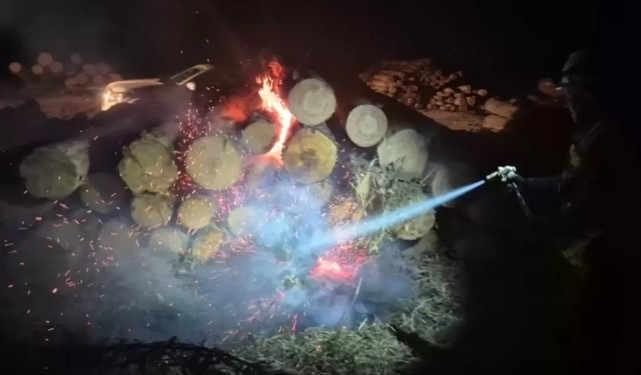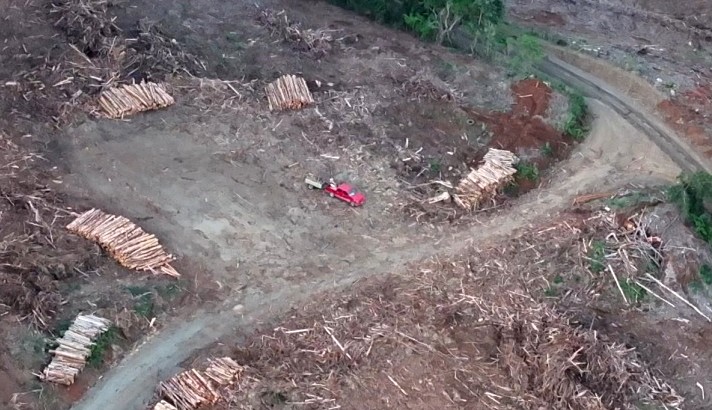Only two arrests made out of 956 complaints filed between 2022 and 2024 for wildfires
The Analysis and Diagnosis Unit of the National Forestry Corporation is authorized to conduct wildfire investigations, and its findings are transferred to the Public Prosecutor's Office. Using their methods, it is possible to reconstruct the fire's progression by analyzing the remnants and marks left by the flames.
A major criticism is being raised by forestry producers regarding fire origin investigations, as they accuse a low success rate in achieving results.
This was stated by Ramón Figueroa, president of the Forest Protection Department of Corma, who explained that in Chile, investigations are the responsibility of the police and prosecutors, who work to determine the causes and potential culprits. "However, most cases are closed without identifying those responsible," he noted.
As an example, Figueroa cited Spain, where over 20% of reported wildfires result in convictions. "There, when firefighting teams and resources are deployed, professionals are also assigned to investigate the fire's origin from the very beginning. This swift action is key to gathering evidence before it is lost," he commented.
Corma stated, "We believe it is essential that the new Fire Law, currently under legislative review, includes more powers to strengthen and expedite investigative work, as was done with the Timber Theft Law. Between 2022 and 2024, forestry companies have filed over 956 complaints and reports, with only two arrests, highlighting the urgent need to improve this process."
Regarding current investigative methods, Ramón Figueroa asserted that there is much room for improvement, stating, "One of the main shortcomings is the delay in initiating investigations. In many cases, investigations begin months or even years after the fire, making evidence collection extremely difficult. The first hours of a fire are crucial for gathering evidence."
The president of Corma's Forest Protection Department emphasized that if action is not taken promptly, factors like rain or traffic in the area can destroy available evidence. "In contrast, Spain sends professionals to investigate fires simultaneously with firefighting teams, significantly improving the chances of successful investigations," he pointed out.
According to Corma's Forest Protection Department, experience shows that the most common signs of intentional arson include: multiple ignition points in strategic areas to maximize damage, physical evidence (accelerants, incendiary devices), shoe or vehicle tracks, witness testimonies of suspicious activity before the fire, and patterns of ignition and fire spread.
"Forestry companies actively collaborate with police and prosecutors, providing all available resources, such as detection cameras, drone-captured images, and testimonies from firefighters on-site. These tools help contribute valuable information to investigations and support identifying potential causes or culprits," Corma stated.
The Analysis and Diagnosis Unit (UAD) of the National Forestry Corporation (CONAF) is authorized to conduct wildfire investigations, with detailed results confidentially transferred to the Public Prosecutor's Office. "Regarding the methodology used, the Physical Evidence Method and its stages stand out. When applied methodically and systematically to all fires, it allows determining the area of origin and its cause," CONAF detailed.
In the Biobío Region, 647 wildfires have been investigated during the 2023-2024 period. Analysis revealed that 56% were intentionally set, 40% due to negligence, 3.6% accidental, and 0.4% from unknown causes," reported the National Forestry Corporation.
Source:Diario Concepción

















